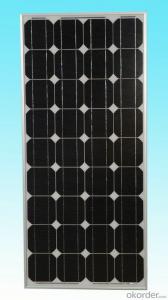Embracing the Power of the Sun: A Personal Journey into Solar Energy Systems
As I stood on my rooftop one sunny morning, gazing at the vast blue sky, I couldn’t help but feel a sense of awe and inspiration. The sun, that great ball of fire in the sky, has been the lifeblood of our planet for eons. It dawned on me that harnessing its energy could be the key to a sustainable future for my home and perhaps the world. This thought led me on a personal quest to understand and implement solar energy systems in my own life.
Why Solar Energy? A Glimpse into the Future
Solar energy is more than just a trend; it’s a necessity for our future. With the world’s energy demands skyrocketing and the impact of fossil fuels on our environment becoming increasingly apparent, the shift to renewable energy sources is not just a choice but a responsibility. Solar energy, with its abundance and renewability, stands out as the most promising solution.
The Basics: Understanding Solar Energy Systems
Before diving headfirst into solar panels and installation, it’s essential to grasp the fundamentals of how solar energy systems work. Solar panels, or photovoltaic (PV) modules, convert sunlight directly into electricity. This process, known as the photovoltaic effect, involves the interaction of photons with the panel’s semiconductor material, generating a flow of electrons. The electricity produced can either be used immediately or stored in batteries for later use.
The Components: A Closer Look at the Solar Energy Family
A typical solar energy system consists of several key components:
1. Solar Panels: The heart of the system, capturing sunlight and converting it into electricity.
2. Inverter: Transforms the direct current (DC) produced by the panels into alternating current (AC), which is compatible with household appliances.
3. Mounting System: Secures the panels to your roof or ground.
4. Battery Bank: Stores excess electricity for use during peak demand or when the sun isn’t shining.
5. Charge Controller: Regulates the voltage and current coming into the battery to prevent overcharging.
6. Meter: Monitors the flow of electricity, distinguishing between the power you generate and what you consume from the grid.
7. Balance of System: Includes wiring, fuses, and other hardware necessary for the system’s operation.
Going Green: The Environmental Benefits of Solar Energy
One of the most compelling reasons to switch to solar energy is the positive impact it has on the environment. By reducing reliance on fossil fuels, solar energy systems help decrease greenhouse gas emissions, a significant contributor to climate change. Moreover, solar energy is a quiet and clean source of power, with no moving parts in the panels that could generate noise or pollution.
The Financial Argument: Saving Money with Solar Energy
Beyond the environmental benefits, solar energy systems offer significant financial incentives. The cost of solar panels has plummeted in recent years, making solar energy more affordable than ever. In many regions, you can offset your electricity bill significantly or even eliminate it entirely. Additionally, various government incentives, tax credits, and rebates are available to help reduce the initial investment.
The Social Impact: A Community Effort towards Sustainability
Adopting solar energy is not just a personal choice; it’s a collective movement towards a more sustainable future. As more households and businesses switch to solar, the demand for clean energy increases, encouraging further innovation and development in the renewable energy sector. This shift also helps create jobs and stimulates the economy, contributing to a healthier society.
The Challenges: Overcoming Obstacles in Solar Energy Adoption
Despite the numerous benefits, there are challenges to widespread solar energy adoption. These include the initial cost of installation, the need for sunlight, and the space required for solar panels. However, with technological advancements and innovative financing options, these obstacles are becoming easier to overcome.
The Future of Solar Energy: A Bright Outlook
The future of solar energy is bright, with ongoing research and development aimed at increasing efficiency and reducing costs. Innovations such as perovskite solar cells and solar-powered windows are on the horizon, promising even greater integration of solar technology into our daily lives.
In Conclusion: A Solar-Powered Life Awaits
As I reflect on my journey into solar energy systems, I am filled with hope and excitement for the future. The transition to solar energy is not only a practical and financial decision but also a statement of our commitment to a cleaner, greener world. By embracing solar energy, we are investing in our planet’s health and the well-being of generations to come.
So, if you’re considering a leap into the world of solar, remember that you’re not just powering your home—you’re powering a movement towards a sustainable future. Let the sun’s energy be the catalyst for change in your life and in the world.

